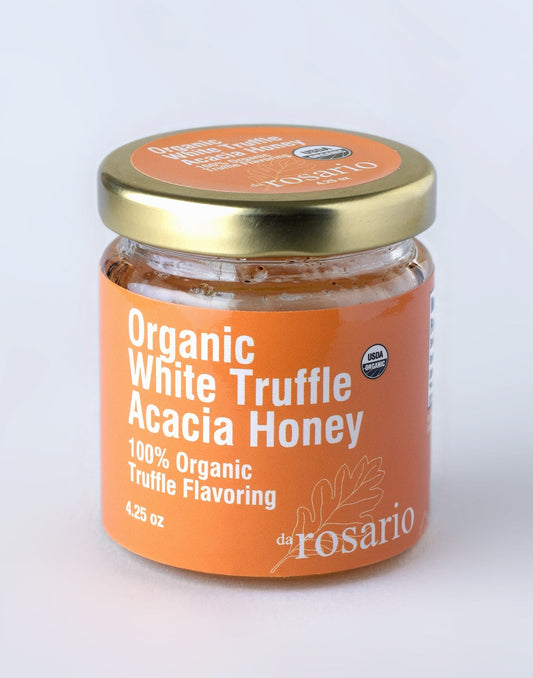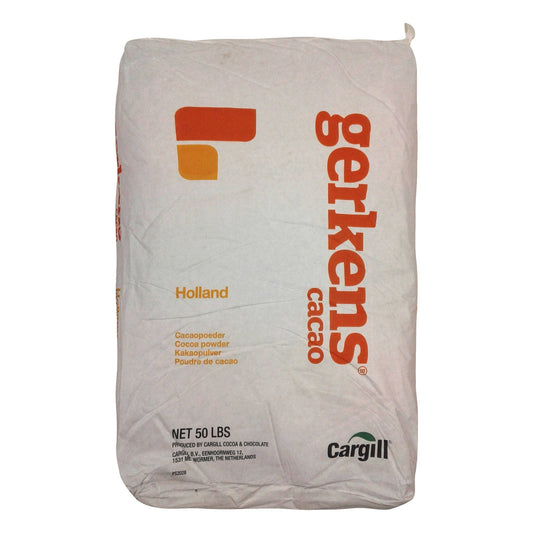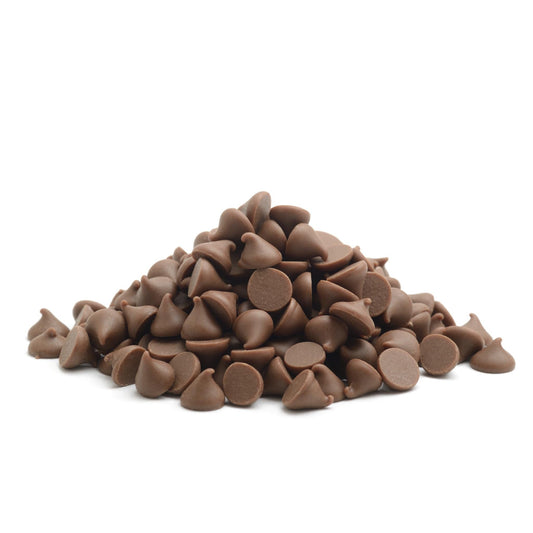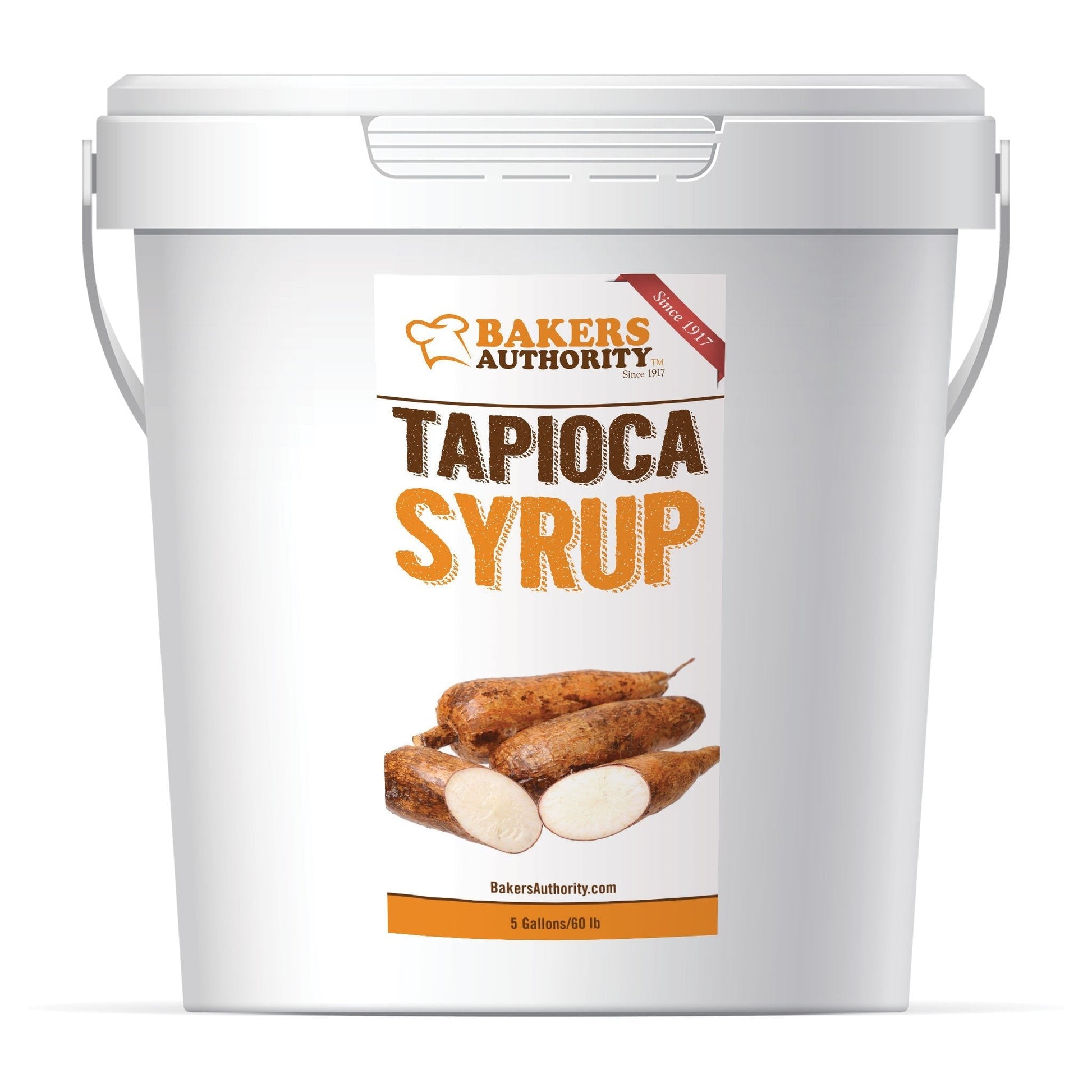Bakers Authority
Tapioca Syrup- (non gmo) 5 GAL
Tapioca Syrup- (non gmo) 5 GAL
Our Non-GMO Tapioca Syrup is a high-quality, naturally derived sweetening agent that carries a neutral flavor profile and exhibits a transparent appearance, allowing it to easily blend into a multitude of recipes without altering their original taste or color. Its primary source is 100% tapioca starch, derived meticulously from the root of the cassava plant, a tropical shrub native to South America.
Unlike some other syrup variants, our Tapioca Syrup is completely free from Genetically Modified Organisms (GMOs), ensuring that you're getting a product that adheres to nature's blueprint and retains all the benefits without the potentially harmful alterations. This commitment to maintaining the integrity of our syrup underlines our dedication to offering you the healthiest, most authentic products possible.
The use of tapioca syrup extends across a broad range of culinary applications, primarily due to its flavorless quality. This attribute makes it a versatile ingredient in various cooking and baking processes. For instance, it is frequently utilized as a thickening agent, providing pies, puddings, sauces, and fillings with a lusciously smooth texture while simultaneously lending a hint of natural sweetness.
Moreover, despite its efficacy as a thickener, our Tapioca Syrup does not introduce a heavy or starchy aftertaste, allowing the true flavors of your culinary creations to shine through. This makes it a preferred choice for professional bakers, chefs, and home cooks who seek an ingredient that enhances the texture of their dishes without compromising the flavor integrity.
We are pleased to offer our Non-GMO Tapioca Syrup in bulk quantities and at competitive wholesale pricing, providing an economical solution for businesses such as bakeries, restaurants, confectioneries, and other food production facilities that require high-quality ingredients in substantial volumes.
Ultimately, our Non-GMO Tapioca Syrup is not just about offering a sweetening or thickening solution; it's about providing a health-conscious, versatile, and reliable ingredient that meets your culinary needs while upholding your commitment to wholesome, natural, and sustainable food choices. Enjoy bulk tapioca syrup at wholesale pricing.
Tapioca Syrup Pail Size: 5 Gallons
Tapioca Syrup Pallet Size: 5 Gallon Pails
Tapioca Syrup Shelf Life: 6 months
Tapioca Syrup Item Number: D-4595
Tapioca Syrup FAQ
What is tapioca syrup actually made of?
Tapioca syrup is made of cassava root, water, and a small amount of citric acid (to adjust the pH). The syrup is then filtered to remove any impurities, and finally heat-treated to help stabilize it.
What are the nutritional pros of using tapioca syrup?
There are several pros of using tapioca syrup. First, it is a natural sweetener that is derived from the cassava root. It has a lower glycemic index than other sweeteners, so it does not cause spikes in blood sugar levels. Second, it is very versatile and can be used in a variety of recipes. Third, it is relatively inexpensive compared to other sweeteners on the market. Finally, tapioca syrup provides a number of health benefits including being high in fiber and helping to improve digestion.
Is tapioca syrup healthier than corn syrup?
There is no definitive answer to this question since there are many different types of corn syrup and tapioca syrup. However, in general, tapioca syrup is thought to be healthier than corn syrup because it is made from a natural source (tapioca). Corn syrup, on the other hand, is made from corn starch, which is a processed food.
Is tapioca syrup healthier than corn sugar?
Tapioca syrup is a bit healthier than sugar since it has a lower carbohydrate content than sugar. A quarter cup of tapioca has 168 calories, while a quarter cup of sugar has around 194 calories. Tapioca syrup can also be a healthy alternative to sucrose, honey, molasses, maple syrup, and corn syrup because of its crisp, sweet flavor.
Can tapioca syrup be used as a binding agent?
Tapioca syrup has no odor or smell, making it perfect for use as a binding agent in processed meats to keep them fresh. Tapioca syrup is low in sodium and a good source of calcium and iron, making it a viable choice for producers searching for a healthy sugar substitute.
Is tapioca syrup the same as high fructose corn syrup?
Tapioca syrup is made from the starch of the cassava root, while high fructose corn syrup is made from cornstarch. They are two different products with different chemical compositions.
Tapioca syrup contains more sucrose and less glucose than high fructose corn syrup, so it has a lower glycemic index (GI). This means that it doesn't cause as big a spike in blood sugar levels as high fructose corn syrup does.
What does tapioca syrup taste like?
Tapioca syrup has a mild, sweet flavor with a slightly earthy note. It is often used as a natural sweetener in beverages and baking recipes.
Is tapioca syrup vegan?
Tapioca syrup is vegan. Tapioca syrup is made from the starch extracted from cassava root. Cassava root is a tuber that grows in the tropics and is a staple food in many countries. The starch is extracted by washing and grinding the roots, then boiling it and straining off the liquid. The thick liquid that remains is boiled down to form a thick syrup.
Highlights of Our Tapioca Syrup
- Provides excellent binding properties with mild sweetness (lower DE syrups)
- Non-GMO
- Made in the USA
- Browning (Maillard reaction)
- Crystal control (e.g., ice creams)
- Humectancy, viscosity, fermentability
Perfectly Suited for
- Bars
- Beverages
- Baked Goods
- Cereal and Granola
- Confectionery
- Dairy
- Sauces and Condiments
Now you can create more vibrant confections and beverages, and snack bars that keep your key ingredients in focus. With growing concern from consumers surrounding genetically modified organisms, satisfy the demand with tapioca-derived non-GMO sweeteners.
BAKERYBreads; cookies; muffins
Lower DE for complex carbohydrates and binding; higher DE for sweetness, humectancy, browning; yeast fermentation; shelf extension
BARS & CEREALS
Nutrition bars; granola; cereal clusters, energy bites
Low-to-mid DE for chewiness, tack-free coating, shine; binding; higher DE for sweetness, humectancy, browning, soft texture
BEVERAGES
Sparkling soda; sports drinks; cocktail mixes
Lower DE for body, mouthfeel and emulsion stabilization; higher DE for sweetness and use as a priming sugar; yeast fermentation
CONFECTIONERY
Lollipops; licorice; caramels; marshmallows; gum; mints
Low-to-mid DE for tack-free crystallization control, binding, texture; high DE for sweetness; good for color development
DRESSINGS & SAUCES
Salad dressings; marinades; dips; spreads; pudding
Lower DE for viscosity modification and mouthfeel, higher DE for sweetness and browning
FROZEN DESSERTS
Ice cream; gelatos; novelty dessert bars
Lower DE for freeze-thaw stability, ice crystal inhibition, improved mouthfeel especially in low or reduced-fat ice cream, higher DE for sweetness, freeze point depression
FRUIT PREPS & PRESERVES
Jams; jellies; table syrups; fruit preparations
Lower DE for viscosity and body; higher DE for sweetness and water activity control
NUTRA & PHARMA
Gummy vitamins; lozenges; cough syrups
Creates softness and chewiness in gummy vitamins; low-tack coating in hard lozenges; improves viscosity of liquid suspensions
SNACKS
Coated popcorn; pretzels; fruit strips and snacks
Lower DE for low-tack coating and binding; higher DE for sweetness and soft texture
Couldn't load pickup availability

Our Non-GMO Tapioca Syrup is a high-quality, naturally derived sweetening agent that carries a neutral flavor profile and exhibits a transparent appearance, allowing it to easily blend into a multitude of recipes without altering their original taste or color. Its primary source is 100% tapioca starch, derived meticulously from the root of the cassava plant, a tropical shrub native to South America.
Unlike some other syrup variants, our Tapioca Syrup is completely free from Genetically Modified Organisms (GMOs), ensuring that you're getting a product that adheres to nature's blueprint and retains all the benefits without the potentially harmful alterations. This commitment to maintaining the integrity of our syrup underlines our dedication to offering you the healthiest, most authentic products possible.
The use of tapioca syrup extends across a broad range of culinary applications, primarily due to its flavorless quality. This attribute makes it a versatile ingredient in various cooking and baking processes. For instance, it is frequently utilized as a thickening agent, providing pies, puddings, sauces, and fillings with a lusciously smooth texture while simultaneously lending a hint of natural sweetness.
Moreover, despite its efficacy as a thickener, our Tapioca Syrup does not introduce a heavy or starchy aftertaste, allowing the true flavors of your culinary creations to shine through. This makes it a preferred choice for professional bakers, chefs, and home cooks who seek an ingredient that enhances the texture of their dishes without compromising the flavor integrity.
We are pleased to offer our Non-GMO Tapioca Syrup in bulk quantities and at competitive wholesale pricing, providing an economical solution for businesses such as bakeries, restaurants, confectioneries, and other food production facilities that require high-quality ingredients in substantial volumes.
Ultimately, our Non-GMO Tapioca Syrup is not just about offering a sweetening or thickening solution; it's about providing a health-conscious, versatile, and reliable ingredient that meets your culinary needs while upholding your commitment to wholesome, natural, and sustainable food choices. Enjoy bulk tapioca syrup at wholesale pricing.
Tapioca Syrup Pail Size: 5 Gallons
Tapioca Syrup Pallet Size: 5 Gallon Pails
Tapioca Syrup Shelf Life: 6 months
Tapioca Syrup Item Number: D-4595
Tapioca Syrup FAQ
What is tapioca syrup actually made of?
Tapioca syrup is made of cassava root, water, and a small amount of citric acid (to adjust the pH). The syrup is then filtered to remove any impurities, and finally heat-treated to help stabilize it.
What are the nutritional pros of using tapioca syrup?
There are several pros of using tapioca syrup. First, it is a natural sweetener that is derived from the cassava root. It has a lower glycemic index than other sweeteners, so it does not cause spikes in blood sugar levels. Second, it is very versatile and can be used in a variety of recipes. Third, it is relatively inexpensive compared to other sweeteners on the market. Finally, tapioca syrup provides a number of health benefits including being high in fiber and helping to improve digestion.
Is tapioca syrup healthier than corn syrup?
There is no definitive answer to this question since there are many different types of corn syrup and tapioca syrup. However, in general, tapioca syrup is thought to be healthier than corn syrup because it is made from a natural source (tapioca). Corn syrup, on the other hand, is made from corn starch, which is a processed food.
Is tapioca syrup healthier than corn sugar?
Tapioca syrup is a bit healthier than sugar since it has a lower carbohydrate content than sugar. A quarter cup of tapioca has 168 calories, while a quarter cup of sugar has around 194 calories. Tapioca syrup can also be a healthy alternative to sucrose, honey, molasses, maple syrup, and corn syrup because of its crisp, sweet flavor.
Can tapioca syrup be used as a binding agent?
Tapioca syrup has no odor or smell, making it perfect for use as a binding agent in processed meats to keep them fresh. Tapioca syrup is low in sodium and a good source of calcium and iron, making it a viable choice for producers searching for a healthy sugar substitute.
Is tapioca syrup the same as high fructose corn syrup?
Tapioca syrup is made from the starch of the cassava root, while high fructose corn syrup is made from cornstarch. They are two different products with different chemical compositions.
Tapioca syrup contains more sucrose and less glucose than high fructose corn syrup, so it has a lower glycemic index (GI). This means that it doesn't cause as big a spike in blood sugar levels as high fructose corn syrup does.
What does tapioca syrup taste like?
Tapioca syrup has a mild, sweet flavor with a slightly earthy note. It is often used as a natural sweetener in beverages and baking recipes.
Is tapioca syrup vegan?
Tapioca syrup is vegan. Tapioca syrup is made from the starch extracted from cassava root. Cassava root is a tuber that grows in the tropics and is a staple food in many countries. The starch is extracted by washing and grinding the roots, then boiling it and straining off the liquid. The thick liquid that remains is boiled down to form a thick syrup.
Highlights of Our Tapioca Syrup
- Provides excellent binding properties with mild sweetness (lower DE syrups)
- Non-GMO
- Made in the USA
- Browning (Maillard reaction)
- Crystal control (e.g., ice creams)
- Humectancy, viscosity, fermentability
Perfectly Suited for
- Bars
- Beverages
- Baked Goods
- Cereal and Granola
- Confectionery
- Dairy
- Sauces and Condiments
Now you can create more vibrant confections and beverages, and snack bars that keep your key ingredients in focus. With growing concern from consumers surrounding genetically modified organisms, satisfy the demand with tapioca-derived non-GMO sweeteners.
BAKERYBreads; cookies; muffins
Lower DE for complex carbohydrates and binding; higher DE for sweetness, humectancy, browning; yeast fermentation; shelf extension
BARS & CEREALS
Nutrition bars; granola; cereal clusters, energy bites
Low-to-mid DE for chewiness, tack-free coating, shine; binding; higher DE for sweetness, humectancy, browning, soft texture
BEVERAGES
Sparkling soda; sports drinks; cocktail mixes
Lower DE for body, mouthfeel and emulsion stabilization; higher DE for sweetness and use as a priming sugar; yeast fermentation
CONFECTIONERY
Lollipops; licorice; caramels; marshmallows; gum; mints
Low-to-mid DE for tack-free crystallization control, binding, texture; high DE for sweetness; good for color development
DRESSINGS & SAUCES
Salad dressings; marinades; dips; spreads; pudding
Lower DE for viscosity modification and mouthfeel, higher DE for sweetness and browning
FROZEN DESSERTS
Ice cream; gelatos; novelty dessert bars
Lower DE for freeze-thaw stability, ice crystal inhibition, improved mouthfeel especially in low or reduced-fat ice cream, higher DE for sweetness, freeze point depression
FRUIT PREPS & PRESERVES
Jams; jellies; table syrups; fruit preparations
Lower DE for viscosity and body; higher DE for sweetness and water activity control
NUTRA & PHARMA
Gummy vitamins; lozenges; cough syrups
Creates softness and chewiness in gummy vitamins; low-tack coating in hard lozenges; improves viscosity of liquid suspensions
SNACKS
Coated popcorn; pretzels; fruit strips and snacks
Lower DE for low-tack coating and binding; higher DE for sweetness and soft texture







